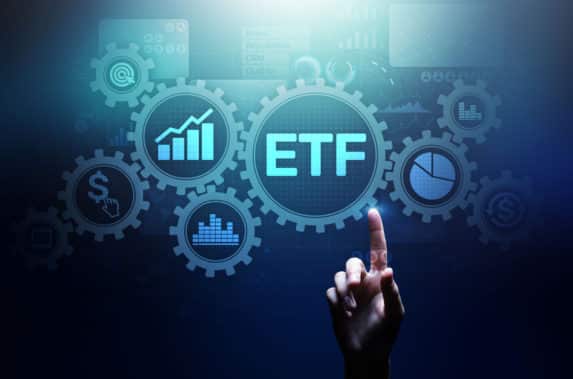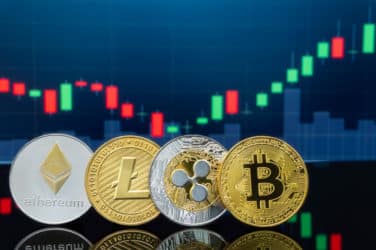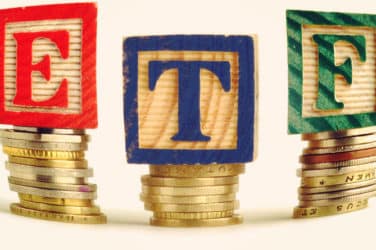

Global active inflows for exchange-traded funds increased 73% in the first half of this year according to data from State Street and growth could accelerate further if the U.S Securities and Exchange Commission approves share class ETFs.
Global ETF inflows reached $900bn in the first half of 2025, a 25% increase over the same period last year according to State Street’s 2025 Global ETF Megatrends Midyear Review. Global active ETF inflows reached $267bn in the first half of this year, a 73% increase over the same period last year. The report said active ETFs now account for more than one third, 39%, of U.S. ETF inflows and represent more than half of all US-listed ETF in the country.
Frank Koudelka, global head of ETF solutions at State Street, told Markers Media: “In the early days ETFs were a tool to put passive vehicles out into the market, but they have become a vehicle for any type of investment.”
The fees for active ETFs are higher than for passive vehicles which track an index, but Koudelka argued that they are still cheaper than the equivalent active mutual fund. ETFs can have “many different flavors,”such as active stock picking, quant-based strategies or outcome products which could aim to generate more income or to eliminate some volatility.
“However, passive is not slowing down,” he added. “It is just that more and more active is coming into the market and the growth trajectory is significantly higher than passive.”
Koudelka continued that 37 of the top 50 asset managers in the U.S. have launched active ETFs, and many of the same names are in the process of launching in Europe. He highlighted that active launches have seen an “extreme” acceleration in Europe this year.
In the past it was typical for one or two new issuers in Europe to come to market in a given year through State Street. This year State Street is talking to 10 issuers about an ETF launch, of which five are active. There has been a lot of activity in Australia but he described Asia as being in its very early days, although State Street expects significant uptake in Singapore and Japan.
“Active is in the second or third inning of a baseball game,” he added. “Passive is highly mature and is in the middle innings.”
In Europe, State Street is also seeing a proliferation of ETF savings plans across the continent as governments encourage retail participation in capital markets and younger investors use digital platforms.
“There is a nice institutional base in Europe but now we are getting a stronger retail base, which is more buy and hold,” he added. “More types of participants improves the trading experience for all investors.”
Assets invested in the actively managed ETFs industry globally reached a new record of US$1.48 Tn at the end of June, @ETFGI https://t.co/oqTpmirwxx#Register https://t.co/8ZcdMRyGqB for our 6th @ETFGI Global #ETFs Insights Summit – United States on Nov 5 in New York @YaleClubNYC pic.twitter.com/rXXSJX04Rt
— ETFGI (@etfgi) July 22, 2025
ETF share class
In Europe many existing ETF issuers are looking at their active fund ranges and bolting on an active ETF share class according to Koudelka.
“Europe is ahead of the US market as it allows managers to come to market with different types of strategies, either as a standalone active ETF or as a share class bolted onto an existing product,” he added.
The existing fund already has a performance track record and Koudelka highlighted that adding an ETF share class is an efficient way of adding new investors. The portfolio management team only needs to manage one pool of assets with different share classes, while managing an active mutual fund and launching an active ETF for that strategy involves two different pools of assets.
In Europe Eurizon Asset Management is launching a tranche of listed/unlisted products and five State Street clients in the region are working on share class launches. In Asia Pacific, Nomura launched the first active ETF, which was quickly followed by several other asset managers.
However in the U.S., the SEC has yet to give final approval for actively managed ETF share classes although 70 managers have filed to launch the product. State Street said in its report that 34 of these filers are State Street clients and four planned “early adopters” have requested that the firm establishes launch teams. Koudelka is bullish that the SEC will approve the ETF share class this year, based on the regulator’s suggestions for amended filings.
“We are also bullish on the amount of products that we are going to see as a result,” he added. “We are excited as it will bring in new participants.”
Koudelka highlighted that State Street has already built technology for the ETF share class in Europe, Canada and Australia which could be deployed in the U.S.
New asset classes
Just as SEC approval of ETF share classes is expected to boost the product, the favorable attitude of the regulator towards digital assets under the new administration is also expected to be positive for ETFs.
Koudelka said the SEC has said more tokens will be authorised so uptake in the institutional market will increase and boost assets and liquidity. In addition the FCA, the UK financial regulator, has said it will allow crypto ETFs to be sold to retail investors, which will boost the ETF market.
“Investors that have been sitting on the sidelines but have always wanted to participate in crypto can now participate because of the wrapper,” he added.
The lead story of digital assets in 2025 has been the incredible rise of BlackRock’s bitcoin ETF, IBIT, according to the report, after reaching $75bn in assets (of which $52bn has come from net inflows in less than a year),
“However, Canada has been the true pioneer of the expanding digital currency assets in North America with the launch of Solana and XRP coins this year,” added the report. “The US has seen over 40 filings for an array of non-approved coins however, to date we have not seen an expansion beyond bitcoin, ethereum and solana ETFs.”
State Street predicted that spot crypto ETF products will expand to cover the top 10 coins based on market cap, crypto ETFs will expand to multi-coin products and that digital asset ETF assets will become larger than precious metal assets by the end of this year.
State Street Global Advisors and Apollo Global Management have launched a private credit ETF this year and Koudelka said there is heightened interest in putting private market assets into the ETF wrapper, but warned that it is still very early days. He believes the marketplace is trying to figure out how these private markets products, especially the less liquid part of the portfolios, will sit in ETFs which require daily liquidity.
“It’s been a record setting year for us from a client launch standpoint, and we don’t think it’s going to slow down,” he added. “We think it’s going to carry into next year and the future as more asset classes get adopted in the ETF wrapper.”






